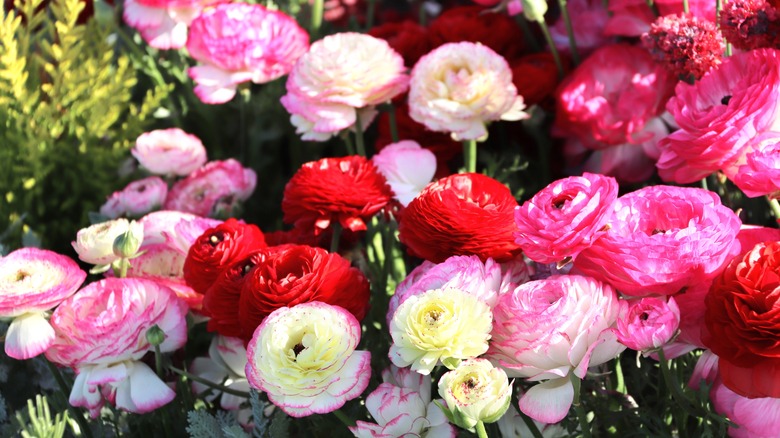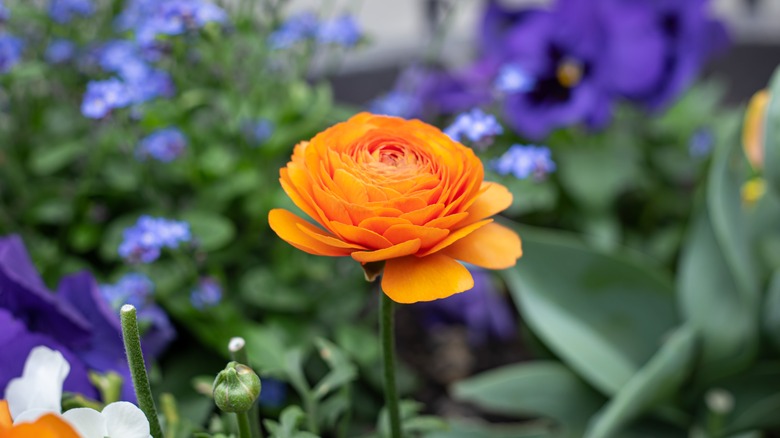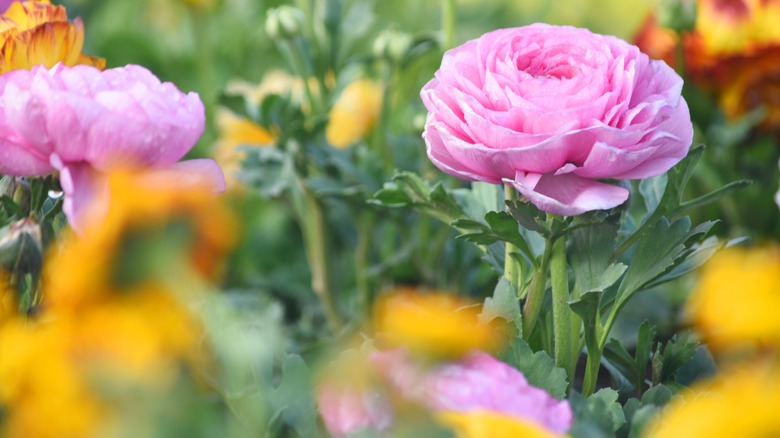Here's The Best Time To Plant Ranunculus Bulbs For Beautiful Blooms
We may receive a commission on purchases made from links.
Ranunculus flowers, or buttercups, look as whimsical as they sound. They come in a riot of different colors — from pink to orange to white — and form a thick ball of tightly packed petals. These playful flowers can instantly boost your home's curb appeal, but to successfully add them to your landscaping, you need to plant the bulbs at the correct time. If you're the type of gardener who likes to get to their cultivation late in the season, these flowers might not be for you. You want to either plant them in late fall or early spring, so adding the bulbs in May is too late.
But which season is best for planting — fall or spring? It's not a matter of preference; instead, the answer depends on where you live. If you're growing ranunculus flowers from corms, you have to check which USDA Hardiness Zone you're in. They can thrive in Zones 4 to 11, but different Zones have different sets of growing rules. If you live in Zones 4 to 6, you want to plant them in late winter/early spring in order to get blooms by early summer. If you live in Zones 7 to 11, where the flower is winter hardy, you want to bring out your gardening spear by fall to get blooms by early spring. Here is a closer look into why.
Zones 4 to 6 should plant in early spring
If you live in Zones 4 to 6, the lowest average temperatures you experience are -30 to 0 degrees Fahrenheit. While ranunculuses are considered cold-tolerant plants, they like temperatures to hover between 50 and 75 degrees Fahrenheit. They begin to fade once temperatures creep past those digits, so they can't survive the extreme cold of these Zones. Because of this, you should plant your corms in early spring so they're not outside for winter. Ideally, if you plant them by March, you should get these cheerful blooms by June.
You want to wait until the last winter frost passes before putting them into the ground, or else you risk killing them. If you live in an area that has unpredictable weather and a frost can roll through in May, then you can protect your bulbs with a caterpillar tunnel made with frost cloth. This special cloth is breathable enough to allow air and sunlight through but sturdy enough to trap the warm air inside, protecting your flowers from fluctuating temperatures. You can get a 20-foot roll for as low as $10 on Amazon.
Zones 7 to 11 should plant in late fall
Ranunculuses are considered winter hardy in Zones 7 to 11, so you can get away with planting them in the fall in order to get blossoms in early spring. The lowest average temperatures in these regions clock in between 0 to 50 degrees Fahrenheit, so they are able to withstand those mild winters. You can plant them in the fall in order to experience their colorful blooms in early spring. Since there usually isn't a threat of severe frost during winter in these regions, it's safe to plant at the end of the growing season.
Another reason you want to plant these bulbs in the fall is so you can have them bloom in early spring rather than summer. Ranunculuses don't tolerate heat well, and because these Zones span across the south and southwest, they will have to endure a heat wave at some point. This will add stress to them, which can result in wilting or their color fading. Because of that, you want to plant them earlier rather than later to avoid the worst of the summer. While they love full sun, they will need to be protected from the scorching afternoon sunlight in Zones 7 to 11. You will need to throw up a cover during those peak hours to protect the flowers from becoming burned.


